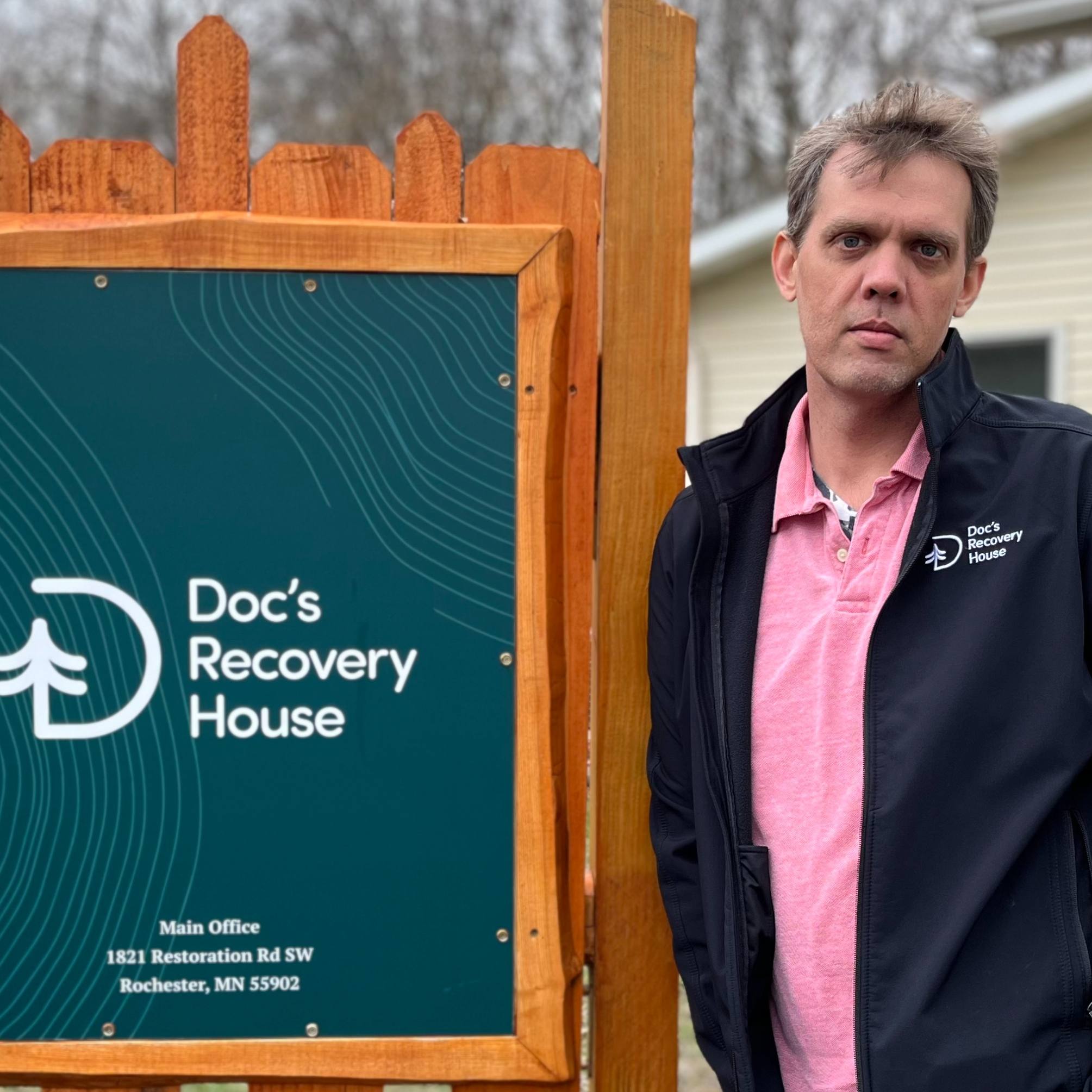-
Health & Wellness
NIH Funding Key to Health Care, Economy, Mayo Clinic Tells Congress
 Mayo Clinic President and CEO John Noseworthy, M.D., submitted the following written testimony to the House Appropriations Subcommittee on Labor, Health and Human Services, Education and Related Agencies on Wednesday on the fiscal 2016 federal budget:
Mayo Clinic President and CEO John Noseworthy, M.D., submitted the following written testimony to the House Appropriations Subcommittee on Labor, Health and Human Services, Education and Related Agencies on Wednesday on the fiscal 2016 federal budget:
Introduction. On behalf of the Mayo Clinic, thank you for the opportunity to submit testimony regarding Fiscal Year (FY) 2016 appropriations. For the reasons enumerated below, Mayo requests no less than $32 billion in FY 2016 funding for the National Institutes of Health (NIH). NIH-funded research is an essential national investment that increases understanding of human disease, spurs the development of novel diagnostics and therapies, and uncovers new strategies to prevent disease and to improve health. Because NIH is the largest source of biomedical research funding not only in the United States but also in the world, the failure of NIH funding to keep pace with medical inflation decreases support for and the conduct of basic research; inevitably, this compromises the realization of those crucial scientific breakthroughs that enhance health, lengthen life, and reduce disease and disability. “Important secondary benefits of medical research such as job creation, regional and global economic activity, international competitiveness, intellectual property and commercializable products are likely adversely impacted as well.”[1] While NIH funding is certainly not Mayo’s only Labor-HHS funding priority, it is on behalf of these research efforts that we focus on NIH funding in our testimony today.
MEDIA CONTACT: Sharon Theimer, Mayo Clinic Public Affairs, newsbureau@mayo.edu / 507-284-5005
Background. Mayo Clinic is headquartered in Rochester, Minnesota, has facilities in six states, and provides care for more than one million people annually from all 50 states and 135 countries around the globe. The Mayo Clinic ethos has always been to provide the best care to every patient every day through integrated clinical practice, education and research. One of Mayo Clinic’s founders, William J. Mayo, M.D., stated: “The best interest of the patient is the only interest to be considered.” That primary value – the needs of the patient come first – has guided Mayo’s practice throughout our 150-year history.
Importance of Research at Mayo Clinic. In addition to clinical care, Mayo has a robust research program, and we believe that exceptional research drives exceptional patient care. This “bench to bedside” is a hallmark of Mayo’s three shields—symbolized by its logo of three interlocking shields, demonstrating Mayo’s commitment to excellence and interdependence in the three areas of clinical practice, research and education. Mayo Clinic conducts basic, translational, clinical and epidemiological research at its campuses in Arizona, Florida and Minnesota and throughout Mayo Clinic Health System. As doctors treat patients and see opportunities for advancing patient care, they work together with Mayo scientists and research teams to develop new and improved diagnostic tools, medications, devices, treatment protocols and more. Mayo Clinic's unique culture of collaboration and teamwork, and its extensive facilities and resources, make it possible for researchers to unravel and solve complex research questions. Funding from NIH has contributed to groundbreaking research at Mayo Clinic that has yielded novel therapies and/or assessment tools for a wide array of conditions including vasculitis, lymphoma, motility disorders of the gut, and Alzheimer’s disease to name just a few. NIH funding accelerates the work of Mayo’s physicians, researchers and scientists to find answers for patients.
Biomedical Research—the Big Picture. The NIH budget over the past decade has consistently trailed behind the rising costs of conducting medical research.[2] Cuts to government-funded medical research will have long-term deleterious effects on the health care system and the economy while a strong investment in biomedical research will lead to a stronger financial picture in the United States. For example, researchers have suggested that a 1% reduction in cancer-related mortality could save $500 billion.[3] Recent research referenced in the New England Journal of Medicine revealed inadequate funding for scientists working in the U.S., and this has coincided with a decline in the number of funded NIH grant applications—from 31% in FY 2002 to 19% in FY 2010.[4] In addition to its effect on our economy, a commitment to biomedical research funding has a direct effect on patients’ lives. The commitment to research at Mayo Clinic has directly improved patient health outcomes in numerous ways. For example, a direct contribution of Mayo research that was funded, in part, with NIH dollars is a novel imaging technology for detecting organ fibrosis—a safer and less expensive alternative to tissue biopsy.
History of NIH Funding. As noted by the Association of American Medical Colleges (AAMC) in its recent FY 2016 written testimony, the NIH budget remains lower than it was in FY 2012 in actual dollars, and since 2003, NIH funding has decreased by 23 percent after adjusting for biomedical inflation. These statistics need to change. As AAMC also noted, almost 84 percent of the NIH’s budget is competitively awarded through more than 55,000 research and training grants to more than 300,000 researchers at over 2,500 universities and research institutions across the country. This includes Mayo Clinic, and this crucial funding supports life-saving and life-improving research at our facilities and others throughout the nation.
Translational Research. Translational research occurring every day at Mayo Clinic has a direct link to clinical outcomes. For example, Mayo scientists discovered a class of drugs called ‘senolytics’ that selectively kill senescent cells. Targeting senescent cells may enhance lifespan and delay, alleviate, prevent, and/or treat age-related chronic disease and disability as a group, instead of one at a time.[5] This research would not have been possible without NIH funding. Additional examples of Mayo Clinic research funded, in part, by NIH that has had a direct impact on clinical outcomes include: the development of novel peptide-based drugs for a new therapeutic approach to heart failure and hypertension; the development of proper procedures and protocols that reduce mortality from myocardial infarction (heart attack); using pharmacogenomics (the impact of genetic variation on drug responses) as a way of devising novel therapies for breast cancer.
As stated the portfolio of NIH sponsored research is expansive and critical to the future of discovery and innovation. We highlight one example of critical NIH initiatives for which continued, robust funding is essential – the Specialized Programs of Research Excellence (SPOREs). The SPORE program is housed within the Translational Research Program (TRP), part of the National Cancer Institute (NCI). According to the agency, SPOREs are “the cornerstone of NCI’s efforts to promote collaborative, interdisciplinary translational cancer research.” SPORE grants support projects that will result in new and diverse approaches to the prevention, early detection, diagnosis and treatment of human cancers. At Mayo Clinic, a SPORE grant helped fund research that contributed to a rekindled interest in a class of drugs known as PARP inhibitors to treat cancer, and their recent regulatory approval in fall 2014 to treat ovarian cancer in the U.S. and Europe. Without Mayo’s ovarian SPORE grant from NIH, this breakthrough likely would not have been possible.
Conclusion. As a worldwide leader in medical care, research and education, and through its integrated clinical practice, education, and research, Mayo Clinic’s mission is to provide the best care to every patient and to inspire hope for patients with challenging diseases. A commitment to and support for biomedical research are indispensable in meeting both objectives. We strongly urge the committee support at least $32 billion in funding for NIH in FY 2016, and that specific, meritorious funding programs, such as SPORE funding, be protected in the FY 2016 Labor-HHS appropriations bill.
[1] FY 2016 Budget Justification, NIH.
[2] Gordon H. Sum, MD et al., “The Calculus of National Medical Research Policy – The United States Versus Asia”, New England Journal of Medicine, August 23, 2012, pp. 687-690
[3] Ibid.
[4] Ibid.
[5] Yi Zhu et al. “The Achilles’ heel of senescent cells: from transcriptome to senolytic drugs”, Aging Cell, March, 7 2015, pp. 1-15
Related Articles







